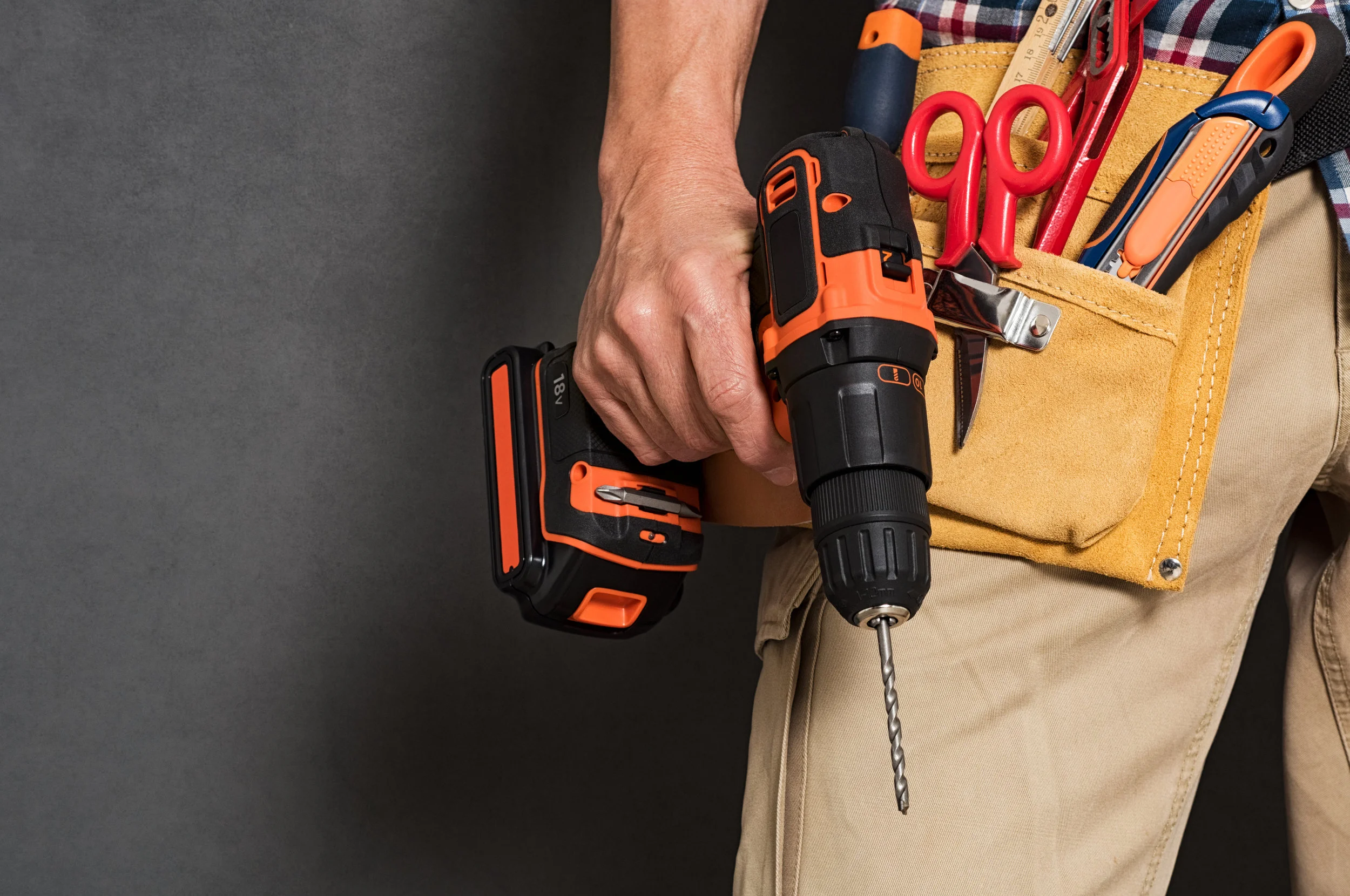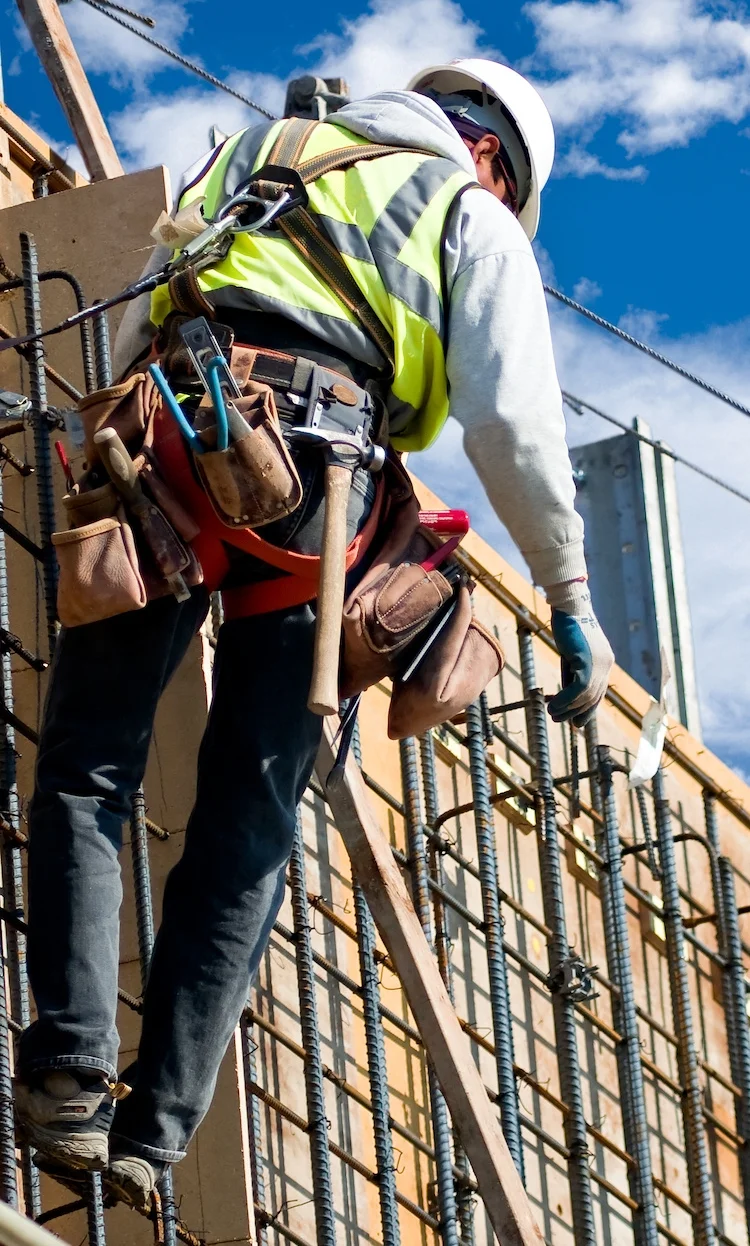Job safety and job efficiency go hand-in-hand and one of the best ways to be safer and more efficient is to have the right tools for the job. Stop dropping your tools by purchasing a scaffolding tool belt—then there will be no incidents of climbing a ladder to repair a skylight and wondering “Where did I leave my hammer?” only to realize that it’s right where you left it—on the ground.
5 Benefits of Using a Scaffolding Impact Drill
Increase Comfort and Safety with the Proper Scaffolding Tool Belt
When working on scaffolding, the last thing you need to worry about is your tool belt. You should not have to look at your tool belt to confirm your access to each tool—it should be automatic. You want to keep tools secure and available at all times. A proper scaffolding tool belt can dramatically increase the comfort of your tool belt and the safety involved in accessing what you need to get the job done.
Impact Driver or Drill - Which Do you Need for Scaffolding?
Working on Scaffolding: How to Organize Your Tool Belt
When you’re working on scaffolding, you don’t want to be fumbling around in your tool belt looking for that particular tool that you need. A well-organized tool belt is not only efficient, but can allow you to move easier and keep you safe. Safety is paramount when you’re working on scaffolding, so here are some tips on how to maintain a well-organized tool belt.
How Can a Construction Worker Tool Belt Prevent Injury?
Basic Safety for Operating Construction Tools
Construction sites can be dangerous territory for the untrained and ill equipped. In addition to working in precarious locations, hand and power tools can be dangerous, even fatal, if wielded carelessly. This makes it essential to keep your crew well-trained in safety practises and properly equipped to keep your project sites accident free.
Essential Scaffolding Supplies
When working on scaffolding, there are certain requirements that your tools need to meet. It goes without saying that your tools should be suited to the medium you’re working with, be it wood, stone, or concrete. It’s likely that you’ll find yourself performing certain tasks repeatedly and the tools required for these small, frequent actions are always essential to have at hand.
An Expert Tradesman Weighs in on the Benefits of the Gorilla Hook versus Bungee Tool Holsters
When it comes to finding the best tool belt accessories, there are a few things to consider. It is common for such equipment to be overpriced and still not deliver the best experience. If you are struggling with your used bungee tool holster or you have already given up on finding a quality power tool holster, keep reading as we break down the benefits of the Gorilla Hook in order to help you in your search.
A Tool Pouch Is Handy But It Can't Replace The Gorilla Hook
Whether you’re a carpenter, an electrician, or a general contractor, we suspect you’ve experienced problems with your standard tool pouch. It’s true: tool pouches make your cordless power tools more accessible by allowing you to take them with you wherever you go. However, with all the zippers, clips, buttons, and buckles that many of these pouches come with, one-handed access to your desired tool is often out of the question.
Looking for an Alternative to the Dewalt Drill Holster?
A cordless impact drill is a versatile and vital tool for any contractor. It allows easy use whether you are drilling holes or tightening bolts, unimpeded by any lengthy power cords. However, most modern tool belts struggle to accommodate these bulky tools securely. Not only is retrieving dropped tools highly inefficient but it can also create a precarious situation when working with a crew and operating impact guns in high places, as a dropped impact drill can cause serious damage.
If you're an Electrician, it's Time to Augment your Tool Bag with the Gorilla Hook
The amount of gear an electrician carries attached to his tool belt often leaves little room for bulky drill pouches and holsters. However, cordless drills and power tools are very often an essential piece of equipment that will need to be kept near at hand. If you’re an electrician with this issue, the Gorilla Hook is the answer.
Stop Struggling with your Old Bungee Tool Holder Loop or Hook!
Safety and efficiency in the building trades are critical components of this type of work. Keeping frequently used tools on hand saves time, but the risk of dropping these tools, particularly from heights, is dangerous and costly should an expensive tool, like a cordless drill, break. When you need both hands free to perform your job safely and accurately but also need the tools of the trade nearby, wearable accessories that hold these tools provide solutions to this problem.
Are Impact Wrenches Now the Standard for Scaffolders?
While a growing number of scaffolders are trading their scaffold spanners for impact wrenches, we ask the question, is this the new industry standard or just a passing trend?
While no regulations exist that enforce or prohibit their use on scaffolding, it does seem that the speed and power of the impact wrench offers more efficiency in what has become a highly competitive industry.
The British organisation, NASC (National Access and Scaffolding Confederation), has offered some suggestions following a series of tests examining the safety of using impact wrenches for scaffolding work, specifically drop forge fittings, but found no negative consequences of using impact wrenches for erecting or disassembling scaffolding.
The recommendations issued by the NASC center largely on the fact that the torque created by an impact wrench exceeds the recommended torque for tightening scaffolding fittings. However, they go on to explain that much like car manufacturers, the top speed, or in this case, top torque, is often exaggerated. It is therefore unlikely that an excess of torque would be achieved in a real world situation. Still, a thorough risk assessment of the particular make and model of impact wrench that is intended for use is the responsibility of the company.
Impact wrenches, as with any power tool, may require some training and an acclimatization period for employees who are not experienced with their use, but the long term benefits of speed and efficiency far outweigh the expense of this training. Proper protective equipment is also necessary in order to protect employees against the noise and vibration created by electric wrenches, but chances are these measures are already in place.
The other gripe many opponents of the impact wrench have is their reliance on battery power. Proper care obviously needs to be taken to preserve the battery life of your tools, but with battery technology improving exponentially, it’s a logical conclusion to assume that limited battery life will soon be less of an obstacle. In the meantime, the impact wrench’s hunger for battery power can be counteracted by ensuring a set of spare batteries is kept charged and available on site at all times.
The general consensus is that you wouldn’t drill a hole by hand if you had a drill available, so why should it be different when it comes to assembling or disassembling scaffolding? Granted there are some limitations, but none that will not be solved in due course with advancements in technology and the evolution of the industry.
Of course, the old-school resistance is alive and strong with some of the more wizened scaffolders refusing to down their manual wrenches with cries of “You can take my wrench when you pry it from my cold, dead fingers!” In an industry as competitive as this one, that may well be the case. For everyone else, impact wrenches offer a fast and effective way of dealing with the rigors of the job and provide an indispensable addition to your scaffolding arsenal. At the very least, having one at hand when the old wrench just won’t cut it is definitely a good idea.
Only time will tell if the industry will evolve beyond the need for manual tools entirely, but love them or hate them, it certainly looks as though impact wrenches are here to stay.
Have an impact wrench? Get THE GORILLA HOOK!
Image: Ingersoll-rand














